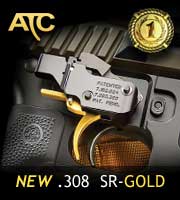MILDOT Master Long Range Shooting Calculator
MILDOT MASTER – The mil-dot reticle is in increasingly widespread use among long-range rifle shooters as a means of estimating the range to the target. This estimation is critical in order to correct for the varying degree of projectile drop (and/or wind drift) at different ranges and thereby enable the shooter to hit the target. With training and familiarization, an experienced marksman can accurately estimate range to target by using this type of reticle and by making the appropriate calculations. Originally fitted to telescopic sights designed for military (and later police) use, the mil-dot reticle has seen growing acceptance in the civilian sector among target shooters and hunters.
By using a set of fixed references within the scope, the shooter can compare the size of the target, a portion of the target, or a nearby reference target to a series of precisely sized dots and spacing. By estimating the size of the target or nearby reference and noting the number of mils that equal the size of the target, the shooter can determine the range to the target by applying a formula (size of target in yards multiplied by 1000, divided by size of target in mils, equals range to target in yards), usually done with the help of a conventional hand held electronic calculator. However, there are problems associated with the use of an electronic calculator. The MILDOT MASTER is designed to eliminate these problems.
- Problem: The necessary calculations are somewhat complex and depend upon the shooter’s ability to remember and correctly apply the formula. Solution: With the Mildot Master, you don’t have to memorize formulae, as the correct formulae are already built into the scales.
- Problem: The size of the target is more often than not mentally estimated in inches, necessitating an additional calculation to convert the target size into a decimal equivalent of yards. ie: 18″ shoulder width. If the range is to be calculated in meters, an additional conversion from yards to meters in necessary. Solution: No conversion of estimated target size from inches into decimal equivalent of yards is necessary, as the Target Size Scale is in increments of feet and inches on the Mildot Master®.
- Problem: Even after the shooter has gone through the range calculation procedure, the amount of bullet drop (or wind drift) applicable to that range must now be applied to the sight picture to enable a hit on the target. Either the scope must be adjusted or the sight picture “held over”, which necessitates a second series of calculations to translate the needed amount of correction into a scope adjustment or hold-over figure for that range and load. Solution: The Mildot Master makes this process extremely simple by performing range determination, sight adjustment, and hold-over calculations simultaneously. Once the range has been determined by aligning the Target Size with the measured number of mils, bullet drop/drift figures are automatically aligned with the corresponding sight adjustment/hold-over figures.
- Problem: Aside from the possibility of errors occurring during these calculations, the time involved in such calculations can prove problematic in certain scenarios, such as military or police counter-sniping operations, timed competitive target-shooting events, or hunting situations. Solution: Speed of calculations necessary to determine range to target and required telescopic sight adjustment and/or hold-over can be significantly reduced by using the Mildot Master in lieu of a conventional hand-held electronic calculator.
The Mildot Master is an analog calculator designed along the principle of a slide rule, utilizing logarithmic and inverse logarithmic scales developed specifically for performing the following operations:
- Rapid and simple calculation of range to target, based on a measurement of the target with a mildot reticle, by aligning the estimated target size directly opposite the mildot measurement, and then reading the range at an index mark.
- Rapid and simple calculation of the amount of sight correction necessary to compensate for bullet drop and/or wind drift for a given range, enabling the shooter to determine either the equivalent telescopic sight adjustment (minute-of-angle, or MOA) or the equivalent hold-over (mils), by reading equivalents in both MOA and mils directly opposite the bullet drop/wind drift figure.
- Additionally, angle of fire for uphill or downhill shots can be accurately measured, and the up/down compensation can be closely calculated to reduce the errors such shots can induce.
- No conversion of estimated target size from inches into decimal equivalent of yards is necessary, as the Target Size Scale is in increments of feet and inches.
- No entry of data or operations through a keypad is necessary, as the device is purely analog and only requires the alignment of figures on scales.
- No memorization of formulae is necessary, as the correct formulae are built into the scales.
- No complex calculations for determination of telescopic sight adjustment or hold-over at various ranges are necessary, as the scales of the device convert drop/drift figures directly into both MOA and mils.
- No separate data sheet is necessary for bullet drop figures, as the reverse side of the device is designed to accommodate either commercially available data decals or user-produced data strips.




